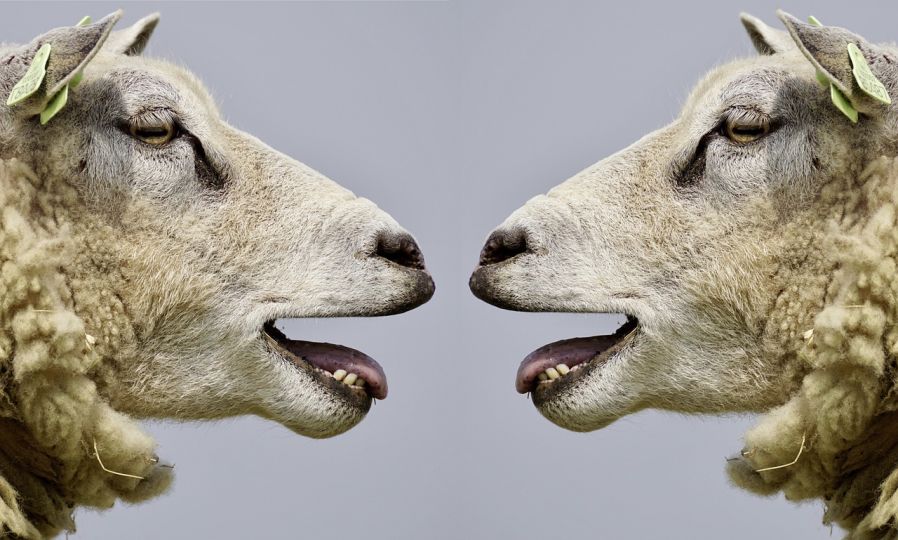As the cost of living crisis bites, more affordable cuts of meat are back in fashion, reports Sophie Morris

Image by Susanne Jutzeler, Schweiz 🇨🇭 💕Thanks for Likes from Pixabay
Rogan Josh, heady with cloves, cardamom and cinnamon, has been a failsafe comfort dish for me for years. But a few months ago I swapped out my usual lamb for mutton after spotting some available online from Swaledale Butchers in Yorkshire for £4 a kilo cheaper than the lamb.
My curry was a success. It had a deep flavour and remained tender as you’d expect of diced lamb, but had more heft and texture to it. It also felt like a more special meal, because eating mutton has become such a rarity in much of the UK. Lamb’s older sibling is almost universally absent from many menus that regularly feature lamb.
“We have to get over this hump of mutton being a tough meat,” says
Bob Kennard, author of Much Ado About Mutton, which he published in 2014 with a foreword by the then Prince Charles who is a fan (the King also launched his Mutton Renaissance Campaign in 2004 and has said it is his favourite dish). Kennard’s website has a mutton sales directory, because you’re less likely to find it in supermarkets than lamb.
Mutton is often used instead of lamb in India and the Caribbean, where it’s easier to get hold of, but it still has a reputation problem in the UK. This, Kennard explains, can be traced back to wartime when people had no choice but to eat lots of old, tough meat.
Once rationing was lifted, consumers wanted younger, tender flesh and remained wary of ancient boiled bones. Officially, meat from a sheep is called lamb until it reaches a year old, then it becomes hogget, and finally mutton at two years of age. “People think it’s going to taste like strong lamb, but it’s got its own complex flavour,” Kennard says.
Now, as the cost of living crisis is biting, there is again more appetite for cheaper cuts with reports of its burgeoning renaissance driven by cost cutting. While the King’s chefs are unlikely to worry about this, what better time to give it a go than the year of King Charles’ coronation?
Pub landlords are naming it a secret weapon in the struggle to cut costs and stay afloat. Pub owner and Campaign for Pubs representative Victoria MacDonald, who runs Norwich pubs The Cellar House and the Old Ram Coaching Inn, says adapting food menus is key to survival at a time when the UK Hospitality organisation is reporting up to a third of its members feel at risk of closure.
“Our fantastic mutton is supplied by Intwood Farm,” tweeted MacDonald after appearing on Jeremy Vine’s Radio 2 show on Monday to talk about the meat. “Can’t beat it roasted, in a curry, made into burgers and in a shepherd’s pie.” MacDonald says her mutton is a third the price of lamb.
Another pub with the clue in the name, The Mutton at Hazeley Heath, Hampshire, opened in late 2022 and is capitalising on old sheep, serving mutton fat crumpets with slow-cooked mutton and red cabbage as a starter, and mutton loin with fondant potato from the grill.
We have higher-welfare farmers to thank for the fact people are talking about mutton coming back onto lots of menus again. Swaledale founder Jorge Thomas, for example, who supplied only restaurants before Covid, says chefs have been fans for a long time. “The knackered old sheep has had a bad press, but done properly people are realising it’s a great thing to eat, with more flavour than lamb. Depending on the dish,
I would probably choose it over lamb,” says Thomas.
Chef-turned-mutton farmer Matt Chatfield, an ambassador for Cornish produce, started producing his Cull Yaw mutton because he didn’t accept that older ewes, past their lamb producing age, were worthless. He supplies countless restaurants including exclusive names like Ikoyi, whose tasting menu comes in at an eye-watering £300.
But for those of us who are watching the pennies, never mind the pounds, what other changes can we expect when we’re dining out this year? MacDonald says she and others are focusing on stews and curries which can be slowcooked in electric ovens overnight, which is much more economical than cooking on gas.